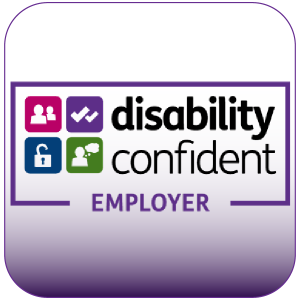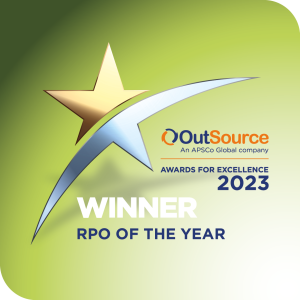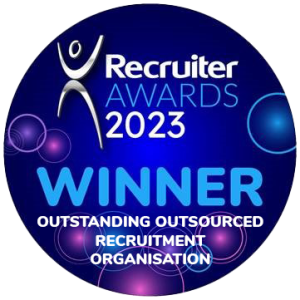While the goals of TA remain the same – create robust talent pools, build a positive employer brand and forecast future hiring needs – changes in the way we work have driven new areas of focus for TA teams.
The pandemic saw a newfound reluctance from many candidates to seek new professional endeavours, making the job of attracting and securing the best talent even more challenging. On the flip side, mass redundancies in some sectors have caused an unprecedented rise in applicants, resulting in less time per applicant and process shortcuts when selecting which candidates should advance.
Such shifts mean internal talent teams need to adapt and evolve to continue attracting and retaining quality talent. In this blog post, we explore the key areas of focus for businesses looking to supercharge TA strategies in 2021.
Achieving agility
Now more than ever, companies recognise the need to respond to short-term changes in demand or supply quickly. To do this, they must have a TA function that strikes the right balance between cost, quality and agility. A good place to start is:
- Identifying talent strengths and gaps. Businesses are advised to compile an accurate picture of the skills, capabilities and experience in the workforce, starting with permanent employees, followed by temporary, contract and gig workers. This may be straightforward for companies with well-established systems in place relating to HR data; however, many organisations will require additional help in establishing what data should be recorded and for what purposes.
- Forecasting future skills needs. For businesses to predict the resources they are likely to need both short and long term, they must combine manager insight (what does the business think it needs?) with budgetary considerations and market trend analysis, including benchmarking data from other organisations. The more informed the planning is, the easier it is to maintain flexibility and mitigate associated risks.
- Developing partnerships that deliver. The last year saw supplier relationships become less transactional and more strategic, with a requirement for flexibility in the face of rapidly changing business needs. Project RPO has become increasingly popular as businesses deal with organisational restructures, recruitment backlogs, unexpected hiring demands and depleted talent pools. Project RPO grants access to recruitment services on-demand, so businesses can ramp up or slow down at any time.
Boosting employer branding
Job seekers are paying close attention to what companies stand for and how they treat their people. To attract discerning talent, employers must evaluate how their organisation is branded and how prospective candidates perceive the workplace culture and environment.
Employer branding is multi-layered, and there are no quick fixes when it comes to elevating it. Main areas of improvement include:
- Transparency. Clear communication on plans for the future as well as ongoing or new initiatives is vital, particularly during periods of uncertainty and recovery. The way companies present themselves to different stakeholders will differentiate them in the labour market and help to engage the right candidates.
- Employee experience. A greater emphasis tends to be placed on candidate experience, but the way existing employees are treated has the greatest impact on external perception. Open communication remains essential as companies navigate the road to recovery, and it’s crucial to reiterate corporate values and their meaning to staff. Health and wellbeing should remain a priority in generating a positive employee experience, with companies taking an active role in the physical and mental health of their workers through benefits, incentives and activities.
- Supporting communities. The pandemic means people are increasingly seeking job opportunities with businesses that actively support communities. Whether it’s teaming up with a charity or pledging to only use local suppliers, robust CSR practices can help to reinforce identity and culture, which, in turn, can positively impact a company’s ability to attract talent.
Hiring for attitude
Recent research revealed that a lack of skills only accounts for 11% of hiring failures, while 89% of hiring failures are the result of candidates having the wrong (or poor) attitudes. In 2021, skills shortages, coupled with a heightened hesitation to change roles, means employers are shifting focus to attitude over skills to attract candidates.
The rationale is that enthusiastic and adaptable people are willing to learn and master new skills quickly. Such a change in approach requires employers to revisit job descriptions to highlight key attributes and shift interview strategies to include questions around attitude and outlook. Such questions might include:
- What challenges have you experienced in the past? How did you overcome them?
- Why did you leave your previous position?
- How do you deal with failure?
- How do you face situations beyond your skill set?
It’s important to remember that hiring for attitude is not the same as hiring for cultural fit. Employers driving Diversity & Inclusion (D&I) strategies in 2021 understand that hiring for culture means acquiring the same behaviours and characteristics repeatedly, which is something they are keen to avoid. Effectively hiring based on an individual’s attitude over skills means implementing a diverse interview panel to ensure different perspectives and unique insights are offered on each answer given.
We can help you get started…
Omni’s Resourcing Effectiveness Assessment is the ultimate health check for your organisation’s talent acquisition strategy. Take our mini REA assessment to identify your current strengths and development areas and receive a report on how you can become more agile in 2021. Complete Omni’s Resourcing Effectiveness Assessment now.




